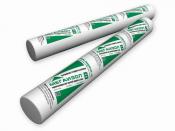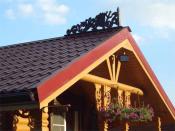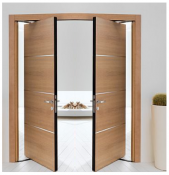Search
Login
Recommended
We install frame-sheathing structures for finishing work, how to choose a metal profile, what are the criteria for assessing the quality of a metal profile
What do you think, with the help of which you can quickly and easily, with minimal financial investments, build a house, insulate it, conduct quite impressive finishing work on the ceiling and walls, the floor, and then build a fence and outbuildings? All this can be done with a metal profile!
Content
- Metal profile: types, characteristics and purpose
- How to choose the metal frame profile
- How to assemble a frame for a false ceiling and to build or align a wall video
- The results of applying the metal profile in the apartment: photo
Metal profile: types, characteristics and purpose
Metal profile - This is a long element of various cross-sectional shapes, in fact, a tape made of metals (based on the purpose and production technology, they may vary).
cold rolling method.
Metallic profile it is the lightest and most durable material in construction today, designed to create load-bearing structures of both the low-rise building itself and to carry out both external and internal finishing work.
Thus, a metal profile is:
- metal square profile for outdoor construction and finishing works, most often galvanized or coated with a special varnish that resists metal corrosion - a metal analogue of a beam (wooden or reinforced concrete).

It is used for the construction of structures for various purposes. As a special case, carrying out the finishing work of apartments and houses, it is used to reinforce doorways or erect new doorways, as floor beams, when they are being transported, when building chimneys, water supply systems in houses. The advantages of such structures is the frame of metal profiles of square section is quickly constructed, has increased strength (a metal square profile is recommended for the construction of buildings in earthquake-prone areas).
- thermal profile (to some extent, the use of metals and appearance is a type of metal profile for drywall) metal, up to 2 mm thick, perforated (perforation is staggered) galvanized profile, similar in its thermal conductivity to wood.

It is used both for erecting crates around prefabricated structures - for the purpose of warming the latter, and as an independent supporting element in frame construction for the construction of walls, floors, roofs in low-rise buildings. The advantages of such a metal profile is its relatively low weight, which greatly facilitates its transportation, does not require the construction of a capital foundation and increases the speed of assembly of frames without the use of special lifting equipment, thermal conductivity, moisture and fire resistance, environmental friendliness and high-precision construction.

- profile for the construction of drywall constructions This is a galvanized profile with metal dimensions and the shape of which varies, depending on its purpose. Used for interior construction and finishing works.

It differs from the thermal profile in the absence of specific perforation, which increases the thermal conductivity characteristics. Depending on the shape, size and purpose, the following types of metal profiles for drywall are distinguished:

- guide profile (PN), has dimensions
50x40;
65x40;
75x40;
100x40 with a standard length of 3000 cm. It is used as guides for rack profiles, as well as for the installation of jumpers between them in the frames of interior partitions of partitions and wall linings.
- rack profile (PS), its dimensions are as follows
50x50;
65x50;
75x50;
100x50, standard length options - 3000; 3,500; 4000 cm. They are used, as a rule, as vertical racks of frameworks of interior drywall partitions and facings. Used in conjunction with a guide profile of the same size.
- ceiling profile (PP), size 60x27x3000. It is used for the construction of frames of suspended ceilings and wall cladding.
- profile metal for gypsum plasterboard angular, protective, plastering (PU), dimensions 35x35x3000. It is used for reinforcing and protecting corners of finished plasterboard structures.
How to choose the metal frame profile
At first glance, the metal profile, especially if we take into account only internal finishing work, is not a super beam on which the whole house will be supported. But, after all, the wall (interior partition), suspended ceiling or decorative niches must withstand the load imposed on them in any conditions: in the kitchen, under the weight of the tiles, in the bathroom, under the influence of high humidity and temperature (there should be no corrosion, even on places of profile cuts).

Therefore, high-quality metal used in the manufacture of a profile for gypsum plaster, the presence of galvanization, its high-quality application are the prerequisites for a good high-quality metal profile. You can check these characteristics only with the help of a certificate of compliance with GOSTs. And they, in turn, have well-known, well-established brands, for example, Knauf and Europrofile. The cost of the profile of these firms is slightly higher than their poor-quality nameless counterparts, but is absolutely affordable.
Therefore, the metal profile whose price is for some reason lower than standard prices, and the manufacturer is not known - is fake and does not deserve your attention and trust.
How to assemble a frame for a false ceiling and to build or align a wall
The results of applying the metal profile in the apartment: photo
With the help of a metal profile, you can not only zone the room, align the walls, but also create real masterpieces. True, the installation specialist of frame-sheathing structures will have to help beginners for this for a fee, but it's worth it!













